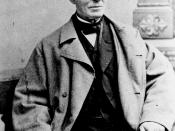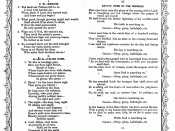A Stronger Resistance The abolitionist movement in the United States sought to eradicate slavery using a wide range of tactics and organizations. The antislavery movement mobilized many African Americans and some whites who sought to end the institution of slavery. Although both black and white abolitionists often worked together, the relationship between them was intricate. The struggle for black abolitionists was much more personal because they wanted to end slavery and also wanted to gain equal rights for blacks. However, many white abolitionists only sought to end slavery and did not fight for equality for blacks. From these exceedingly contrasting perspectives and the continuation of slavery, the sentiment of many abolitionists became more militant and radical; some abolitionists began to use more violent methods of resistance to abolish slavery. Before the 1830s most antislavery activists stressed gradual emancipation. These feelings were expressed mainly by Southern whites, some possessing a fear of free blacks not being ready for freedom and others holding beliefs that slavery would gradually disappear (Notes, 10/18/00).
Generally, only black abolitionists demanded an immediate end to slavery. This difference in opinion contributed to some blacks taking more violent measures to gain freedom and equality. Further contributing to the more aggressive tactics were the goals of the white abolitionists. Many white abolitionists were not able to accept blacks as their equals and did not fight for black equality, which led to increased tension between blacks and whites. More militant tactics, such as uprising and revolts, were gaining support in the nineteenth century. Nat Turner was a black abolitionist that supported the use of aggressive and forceful tactics. In 1831, in Virginia, he led an insurrection and more than 55 white people were killed. It was very bloody and violent and angered many whites from its brutality (Nash, 275). Yet,



Good Topic!
I like the topic chosen for this essay, not many people find it an interesting subject as much as I do but to me, the slavery issues was a big issue. and I think it changed the world even today.
SO basicly, good work!
15 out of 15 people found this comment useful.